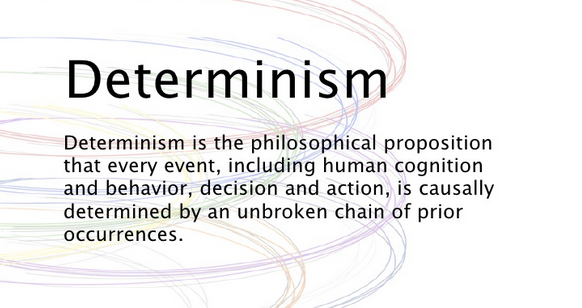BREAKING NEWS
LATEST POSTS
-
DreamWorks Animation to Release MoonRay as Open Source
https://www.awn.com/news/dreamworks-animation-release-moonray-open-source
MoonRay is DreamWorks’ open-source, award-winning, state-of-the-art production MCRT renderer, which has been used on feature films such as How to Train Your Dragon: The Hidden World, Trolls World Tour, The Bad Guys, the upcoming Puss In Boots: The Last Wish, as well as future titles. MoonRay was developed at DreamWorks and is in continuous active development and includes an extensive library of production-tested, physically based materials, a USD Hydra render delegate, multi-machine and cloud rendering via the Arras distributed computation framework.
Note: it does not support osl and usd handling is limited. Cycles may still be a fair alternative.
EDIT
MoonRay review: DreamWorks Animations’ superb rendering software is free for all
A high-performance Monte Carlo ray tracer that’s capable of both DreamWorks’ trademark stylised look and photorealism.
It has all the required features for that setup, including Arbitrary Output Variables (AOVs), which allow data from a shader or renderer to be output during rendering to aid compositing. Additionally, Deep Output and Cryptomatte are supported.
With support for OptiX 7.6 and GPU render denoising with Open Image Denoise 2, MoonRay is able to deliver particularly impressive results, especially when working interactively.
MoonRay has moved to a hybrid CPU and GPU rendering mode for its default state. It’s called XPU, and in many ways combines the best of both types of rendering workflow.
VFX Reference Platform 2023 is probably the biggest addition because it enables the use of MoonRay directly in Nuke 15.
MoonRay has already achieved great success with an array of feature films. Now the renderer is open source, the CG world can expect to see a whole new swathe of MoonRay-powered animations.
For
- Features for VFX workflows
- Open source
- XPU rendering
Against
- Designed for big studios
- Steep learning curve
-
Flair.ai – The AI design tool for product photography
With an intuitive, user-friendly interface and a powerful AI engine, Flair AI can generate high-quality product photoshoots in seconds.
-
EasyFrontend | 700+ Free UI Web Components with Code Editor
EasyFrontend offers a collection of UI Components, Blocks, and Sections built with HTML, React, Bootstrap, and Tailwind CSS to enable you to make a site in minutes. -
DocRes – Document and scans Image Restoration
DocRes is a new model that simplifies document image restoration by handling five tasks: dewarping, deshadowing, appearance enhancement, deblurring, and binarization within a single system.
https://github.com/zzzhang-jx/docres
-
Microsoft Working on ‘Far Larger’ In-House AI Model
-
Apple launches Final Cut Camera app to support multicam productions
https://www.theverge.com/2024/5/7/24151109/apple-final-cut-camera-app-support-multicam-ipad
Apple has released Final Cut Camera for iPhone and iPad, allowing filmmakers to take video and stream it live back to an iPad for a multicam shoot. The updated Final Cut 2 app allows users to can control each Final Cut Camera-running device connected to it with a multiscreen view. Users can switch between production and editing anytime to live-cut their projects in the new version.
-
The 3 Body Problem and the case against Determinism
It’s becoming clear that deterministic physics cannot easily answer all aspects of nature, at astronomical and biological level.
Is this a limitation in modern mathematics and/or tools. Or an actual barrier?
The 𝐓𝐡𝐫𝐞𝐞-𝐁𝐨𝐝𝐲 𝐏𝐫𝐨𝐛𝐥𝐞𝐦 is one of the most enduring challenges in celestial mechanics, addressing the complex motion of three celestial bodies interacting under gravity. Governed by Newton’s laws of motion and the law of universal gravitation, it seeks to predict the paths of the bodies based on their masses, positions, and velocities. While the Two-Body Problem has exact solutions described by Kepler’s laws, introducing a third body leads to a nonlinear system of equations with no general analytical solution. This complexity arises from the chaotic interactions between the bodies, where even minute changes in initial conditions can lead to vastly different trajectories—a key aspect of chaos theory.
Historically, the Three-Body Problem has fascinated some of the greatest scientific minds. Isaac Newton laid its foundation, but it was Joseph-Louis Lagrange and Leonhard Euler who discovered specific cases with periodic or predictable solutions. Lagrange identified the Lagrange points, stable positions where the gravitational forces and motion of the three bodies balance, while Euler found collinear solutions, where the bodies align on a single line periodically. These solutions, though special cases, have profound implications for space exploration, such as identifying stable regions for satellites orbits.
Despite the chaotic nature of the Three-Body Problem, researchers have discovered periodic solutions where the bodies follow repetitive paths, returning to their original positions after a fixed time. In the 1970s, Michel Hénon, Roger A. Broucke, and George Hadjidemetriou identified a fascinating family of such solutions, now known as the Broucke–Hénon–Hadjidemetriou family. These solutions often involve symmetric and elegant trajectories, such as the figure-eight orbit, where three equal-mass bodies chase each other along a shared path resembling the number eight.
Other periodic solutions include equilateral triangle configurations (where the bodies maintain a triangular shape while rotating or oscillating) and collinear periodic orbits (where the bodies periodically align and reverse directions). These solutions highlight the intricate balance between gravitational forces and motion, offering glimpses of stability within the chaos.
While the Three-Body Problem laid the groundwork for understanding gravitational interactions, the study of higher n-body problems reveals the rich and chaotic dynamics of larger systems, offering critical insights into both cosmic structures and practical applications like orbital dynamics. -
James Gerde – The way the leaves dance in the rain
https://www.instagram.com/gerdegotit/reel/C6s-2r2RgSu/
Since spending a lot of time recently with SDXL I’ve since made my way back to SD 1.5
While the models overall have less fidelity. There is just no comparing to the current motion models we have available for animatediff with 1.5 models.
To date this is one of my favorite pieces. Not because I think it’s even the best it can be. But because the workflow adjustments unlocked some very important ideas I can’t wait to try out.
Performance by @silkenkelly and @itxtheballerina on IG
FEATURED POSTS
-
AnimationXpress.com interviews Daniele Tosti for TheCgCareer.com channel

You’ve been in the VFX Industry for over a decade. Tell us about your journey.
It all started with my older brother giving me a Commodore64 personal computer as a gift back in the late 80′. I realised then I could create something directly from my imagination using this new digital media format. And, eventually, make a living in the process.
That led me to start my professional career in 1990. From live TV to games to animation. All the way to live action VFX in the recent years.I really never stopped to crave to create art since those early days. And I have been incredibly fortunate to work with really great talent along the way, which made my journey so much more effective.
What inspired you to pursue VFX as a career?
An incredible combination of opportunities, really. The opportunity to express myself as an artist and earn money in the process. The opportunity to learn about how the world around us works and how best solve problems. The opportunity to share my time with other talented people with similar passions. The opportunity to grow and adapt to new challenges. The opportunity to develop something that was never done before. A perfect storm of creativity that fed my continuous curiosity about life and genuinely drove my inspiration.
Tell us about the projects you’ve particularly enjoyed working on in your career
(more…)
-
Narcis Calin’s Galaxy Engine – A free, open source simulation software
This 2025 I decided to start learning how to code, so I installed Visual Studio and I started looking into C++. After days of watching tutorials and guides about the basics of C++ and programming, I decided to make something physics-related. I started with a dot that fell to the ground and then I wanted to simulate gravitational attraction, so I made 2 circles attracting each other. I thought it was really cool to see something I made with code actually work, so I kept building on top of that small, basic program. And here we are after roughly 8 months of learning programming. This is Galaxy Engine, and it is a simulation software I have been making ever since I started my learning journey. It currently can simulate gravity, dark matter, galaxies, the Big Bang, temperature, fluid dynamics, breakable solids, planetary interactions, etc. The program can run many tens of thousands of particles in real time on the CPU thanks to the Barnes-Hut algorithm, mixed with Morton curves. It also includes its own PBR 2D path tracer with BVH optimizations. The path tracer can simulate a bunch of stuff like diffuse lighting, specular reflections, refraction, internal reflection, fresnel, emission, dispersion, roughness, IOR, nested IOR and more! I tried to make the path tracer closer to traditional 3D render engines like V-Ray. I honestly never imagined I would go this far with programming, and it has been an amazing learning experience so far. I think that mixing this knowledge with my 3D knowledge can unlock countless new possibilities. In case you are curious about Galaxy Engine, I made it completely free and Open-Source so that anyone can build and compile it locally! You can find the source code in GitHub
https://github.com/NarcisCalin/Galaxy-Engine




